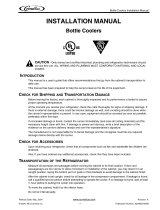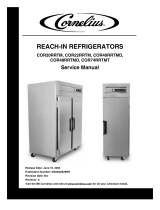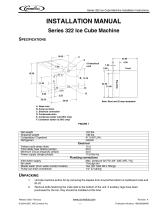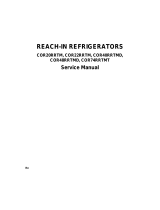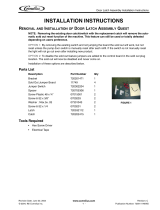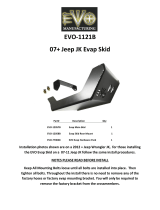
Reach-In Freezer Installation Manual
© 2004, IMI Cornelius Inc. - 7 - Publication Number: 630460260INS
Always check the amperage rating of the condensing unit and the complete cabinet to determine the size
power line required. (See the serial tag on the cabinet.) Any excessive amperage drawn due to low
voltage will affect the performance and shorten the life span of your cabinet.
CABINET START UP
A qualified refrigeration service person should be present to make a complete check prior to start-up.
Before turning on the on/off power switch:
1. Check all refrigeration lines for damage which may have occurred during shipping or installation.
2. Check that all wires are clear of the fans and that the fan blades turn freely.
3. Check the unit compartment for oil leaks.
4. If the compressor is mounted on external springs, be sure the hold-down nuts have been loosened.
5. Clean the interior of the cabinet with mild soap and rinse with a warm baking soda solution (one cup
baking soda to one gallon of water).
6. Dry the interior completely.
After the cabinet is operating
Be sure the compressor cycles three times and the proper temperature is achieved before loading
product into the cabinet.
While waiting for the cabinet to achieve the proper temperature and cycles three times, open the door(s)
to see if the light goes on. With the door(s) open, push the door switch button(s) to see if the lights go out.
INSTALL THE ADJUSTABLE SHELVING
Each cabinet’s pilaster has been installed with knurled-head machine screws and are easily removed for
cleaning. The shelves and shelf clips (4 clips per shelf) are packed in the cabinet. To insert a clip, place
the top of the clip in the pilaster while pushing in and down. Insert the bottom of the clip in the pilaster.
Repeat until all clips are in the desired locations. Place the shelves on the clips, checking to be sure all
four corners of each shelf are level and supported by the four shelf clips.
LOAD THE PRODUCT IN THE CABINET
Before loading the cabinet, be sure the unit has cycled three times and the cabinet has achieved the
desired temperature. Each cabinet is designed to perform within certain temperature and humidity
requirements, based on ambient factors. For example, a storage freezer unit is not designed to freeze
unfrozen foods. It is designed to keep pre-frozen foods frozen. If uncertain about design specifications,
always check with the dealer or factory for the specific design feature of your model.
FIGURE 10















